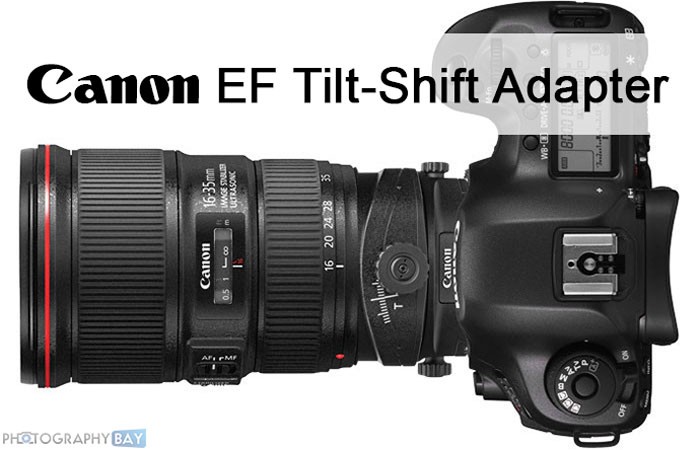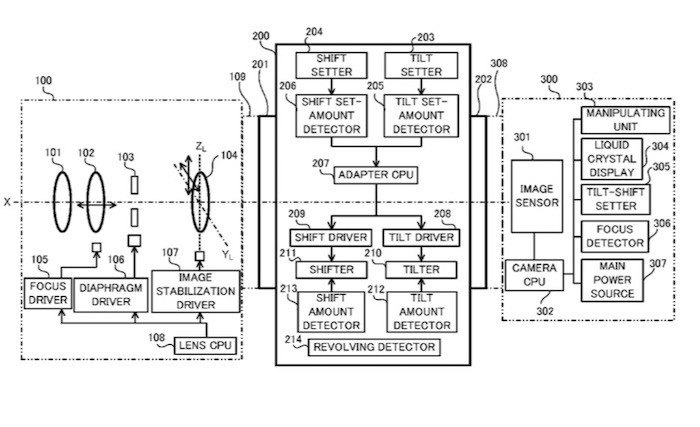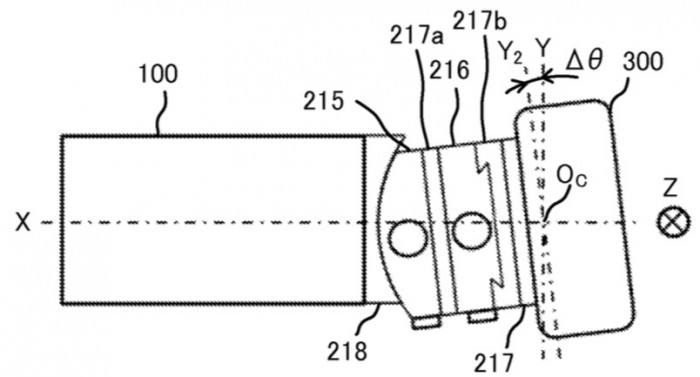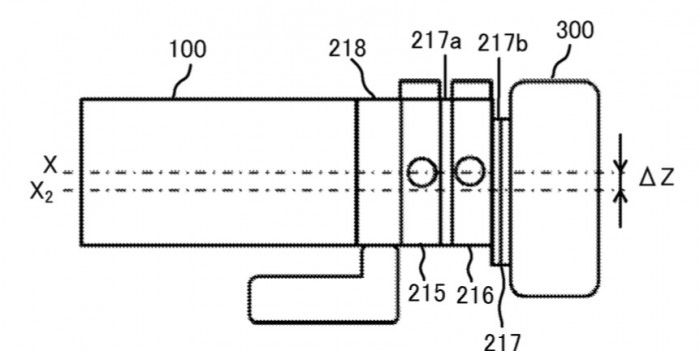
In a recent patent application submitted to the USPTO, Canon revealed a new adapter under development that would essentially turn every Canon EF lens into a tilt-shift lens.
That’s pretty epic.
Read on for how it works and why it’s so cool.
You can buy tilt-shift adapters for Canon mounts now; however, there are a couple of key limitations. First, they are completely manual and transmit no electronic info between the lens and body. Second, you have to go up in format size, which means you are using medium format lenses on Canon DSLRs. That’s a lot of work and probably one of the reasons they aren’t very popular.
Canon’s Tilt-Shift Adapter Design
Canon’s method of getting around the tilt-shift conundrum using standard lenses with standard image circles on a full frame or APS-C camera makes me smile. It’s not quite groundbreaking. Just really smart engineering using tech in a different manner than which is was originally purposed.
You might think Canon would have used an image enlarger inside the adapter to increase the image circle size but Canon went a different route entirely.

Canon Tilt-Shift Adapter Patent Diagram
First off, the Canon Tilt-Shift Adapter has its own CPU inside and no optics. But it works hand-in-hand with the Canon EOS body and EF lenses to not only serve as a pass-through for communication but to also take on some processing burdens to make tilt-shift work on different cameras and lenses. Additionally, there are motorized drivers inside of the adapter that can drive the shift and tilt axes using controls on the camera (or the adapter itself).
The adapter can process the image preview information based on the camera sensor format and the reduced image circle to limit the amount of shift or tilt so that the image is not cut off from the sensor.
Automatic In-Camera Cropping for Tilt-Shift Operation
Additionally, based on what is revealed in the patent application, Canon is using cropping on the sensor in order to fit the tilt-shift images into a native camera format. This just accepts the fact that the image circle is going to be reduced and relies on the high resolution image sensor to accommodate the smaller image circle.

Here’s how the patent application explains the process:
….the camera CPU 302 generates a signal to reduce an image pickup area of the image sensor 301 so as to make available the tilt-shift by the tilt-shift unit, when the image size of the interchangeable lens 100 is equal to the sensor size of the image sensor 301.
[0071] In S007, the camera CPU 302 changes the image recording range for the obtained image to the range in which the light is not shielded by the tilt-shift operation. The changed range for the obtained image may be automatically selected by the camera side or the changed range may be set by the user.
Think about it. If you really needed to tilt and shift an architectural shot with your Canon 5Ds R and EF 16-35mm f/2.8L II USM lens, does it matter that you image will only be 32MP (an arbitrary crop estimation) as opposed to the 50MP full resolution file. Shooting ISO 100 in good light? I don’t that’s a big sacrifice.
Sure, having a proper canon TS-E wide angle lens is ideal. But, holy crap! Think about the flexibility in your camera bag if every lens becomes a tilt-shift lens with a small adapter.
Shift the Camera, Not the Lens

Another cool feature is that the adapter has a tripod mount and can determine whether it is better to shift the lens or camera body. In a TS-E lens, all of the action happens on the lens itself because it is all in a single unit. However, if you are attaching a much larger lens to the adapter, it is going to be easier to shift the body up and down than it would be the lens, which reduces the torque applied to the adapter’s tilt and shift motors.
But wait! There’s more. There are loads of current Canon lenses with a built-in feature today that, when paired with the Canon Tilt-Shift Adapter, have the ability to stretch its capabilities even further.
That feature?
Image Stabilization
The patent application reveals that Canon is using lenses that have built-in Image Stabilization drivers as tools to move the image circle with the adapter. This will lessen (possibly eliminate) the need for cropping image at the sensor level. So, potentially, you can take an existing lens with IS and get the full 50MP on your 5Ds R…
Here’s how the patent spells it out:
The camera CPU 302 calculates the shift difference amount based on the tilt-shift amount and tilt-shift direction in S107. In S108, the camera CPU 302 calculates the correction value of the driving amount of the image stabilizing lens 104 to correct the shift difference amount, and sends the correction value to the interchangeable lens 100 so as to drive the image stabilizing lens 104 by the correction value.
Demand for the IS versions of the Canon 24-70mm f/2.8 lens just went up. And that EF 16-35mm f/4L IS looks pretty slick right now too.
In addition to IS lenses, the patent also discusses the possibility of using sensor shift image stabilization in a similar manner.
This embodiment drives the image sensor 301 instead of driving the image stabilizing lens 104.
[0080] The camera body 300 has an image sensor driver 309 configured to move the image sensor 301 in the Y c and Zc directions orthogonal to the center axis X. This configuration provides an image stabilizer configured to stabilize an image. The other entire structure is similar to that in the third embodiment….
But wait. Canon doesn’t make a interchangeable lens camera with sensor-based image stabilization… Oops. Did I say to much…?
Of course, that could very well be Canon covering its bases on this particular patent embodiment.
Autofocus and Tilt-Shift
Also of note, the application suggests a more automated tilt-shift operation for users who are not experts in using tilt-shift lenses. And, it introduces autofocus to tilt-shift photography by making use of the excellent contrast detect AF technology that has been developed in recent years. Of course, you’ll need a camera that offers competent contrast AF (cameras with pixel-based phase difference AF won’t cut it).
Phase difference AF is problematic with tilt-shift photography because the focal plane fluctuates, whereas contrast AF is essentially automated focus peaking.
Of course, changing the focal plane can also result in the loss of infinity focus on some lenses in some situation, which Canon acknowledges in the patent. That’s just the nature of the physics and something that is most cases would be worth the trade-off.
Camera Compatibility
The patent application makes it clear that some of the features won’t be compatible with all Canon DSLRs. Specifically, some cameras will have built-in menu settings and controls from which they can manipulate the tilt-shift settings of the adapter. However, if a camera doesn’t have these settings and controls built-in, the adapter can still be controlled by adjusting the settings on the adapter itself. As such, it appears that the adapter should be built to work on most Canon DSLRs in recent history.
I would imagine that recent DSLRs could potentially receive firmware updates to add these settings to their menus and possibly map buttons and dials to the Tilt-Shift Adapter controls.
One final note….
Remember, this is a patent application. So, we could be weeks, months or years from ever seeing this product – if we see it at all. Canon has patented some very cool stuff over the years that has yet to see the light of day. (We got the Canon Radio Flash feature I wrote about in 2010 but never the Iris Registration Mode patented feature from 2008.) However, I think this thing could hit the market tomorrow and be a hit. So, hopefully, we’ll see it sooner rather than later.
If you want to read the patent application for yourself, you can download it here.
Copyright/DMCA Notice: The RSS entry was originally published on Photography Bay. RSSID#794326